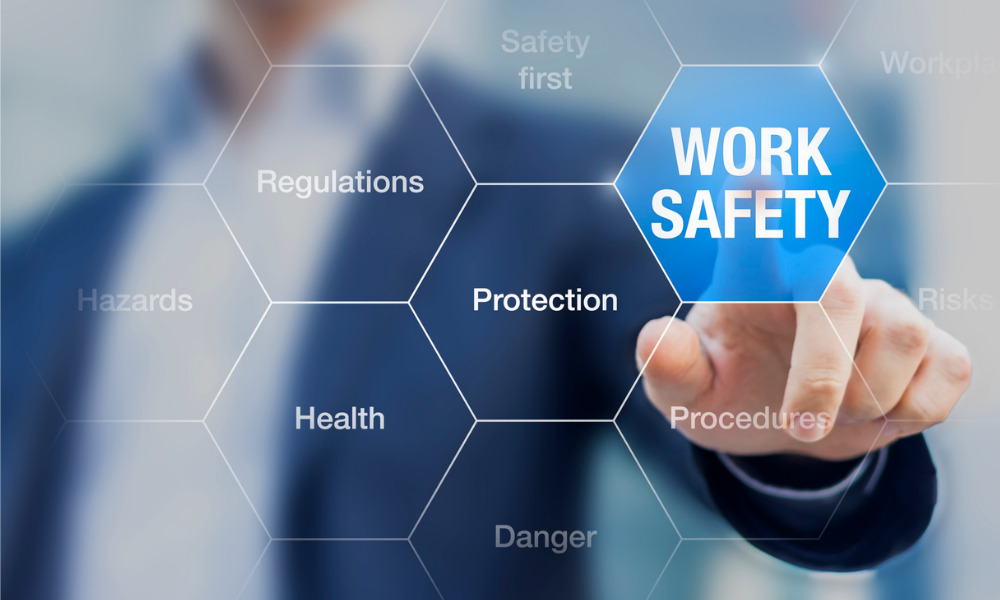"Michael Julian has written an excellent book. Practical, detailed, and a potential life saver if you find yourself in the midst of a targeted attack."

A Comprehensive Guide to Workplace Safety Protocols: Overlooked Steps That Can Stop an Active Threat
Creating a safe workplace is not just about having a plan on paper. True safety depends on preparation, awareness, and attention to details that are often missed or ignored. In many active threat situations, small gaps in planning or oversight allow an attacker to move faster, get closer, and cause more harm than they should.
At A.L.I.V.E. Active Shooter Survival Training, we believe the best way to save lives is to prevent attackers from ever achieving their goals. That starts with strong workplace safety protocols â€" and understanding the critical steps businesses often overlook.
Assessing Risk Before an Emergency Happens
The first pillar of effective safety is understanding your environment. Many workplaces assume they are safe simply because an incident has not happened yet.
Commonly missed elements include:
-
Not reviewing building layout from a threat perspective
-
Blind spots in hallways, parking lots, or reception areas
-
Poorly lit entrances and exits
-
Unsecured side or back doors
-
No regular review of emergency protocols
A thorough risk assessment helps identify weak points long before someone tries to exploit them.
Strengthening Access Control
One of the most common mistakes workplaces make is failing to control who enters the building.
Problems that increase risk:
-
Doors that are left propped open
-
Staff holding doors for unknown individuals
-
Deliveries being allowed inside without verification
-
No visitor sign-in process
-
Lack of ID badges or inconsistent badge enforcement
Even the strongest safety plan fails when an attacker gains easy entry.
Creating Clear, Visible Escape Routes
In many workplaces, emergency exits are blocked, cluttered, or unmarked. In a crisis, these obstacles cost precious seconds.
Key issues to correct:
-
Storing boxes or furniture in hallways
-
Locking emergency exits
-
Faded or missing exit signage
-
Confusing floor layouts
A clear path to safety is one of the most powerful tools against an active threat.
Training Employees To Notice and Report Suspicious Behavior
Most attackers show warning signs long before an incident occurs, but many workplaces do not teach employees what to look for.
Common missed behaviors include:
-
Sudden changes in mood or temperament
-
Verbal threats or aggressive language
-
Increased isolation or fixation on violence
-
Carrying unusual bags, coats, or bulky items
-
Attempting to access restricted areas
Without training, employees may dismiss red flags that could have prevented a future threat.
Avoiding Overreliance on Technology
Security cameras and access systems are useful tools, but they cannot replace human awareness.
High-risk oversights include:
-
Cameras that are not actively monitored
-
Alarms that go unchecked
-
Badge systems that are not regularly audited
-
Belief that technology alone prevents danger
Technology supports safety â€" but it cannot think, notice suspicious behavior, or make real-time decisions like a trained human can.
Practicing the A.L.I.V.E. Method
The A.L.I.V.E. Method gives employees a clear, actionable framework to respond to an active threat.
A â€" Assess
L â€" Leave
I â€" Impede
V â€" Violence
E â€" Expose
This method empowers people to act instead of freeze. It helps workers stay alert, respond quickly, and make decisions that save lives. Training employees in the A.L.I.V.E. system fills the gaps that most safety protocols leave behind.
Conducting Regular Safety Drills and Scenario Practice
Many workplaces create safety plans but never practice them. When a real emergency hits, employees freeze because the steps are not familiar.
Drills should include:
-
Evacuation practice
-
Barricade practice
-
Communication system tests
-
Role-playing threat scenarios
-
Clear instructions on leadership responsibilities
Muscle memory saves lives. Written protocols alone do not.
Creating a Culture of Responsibility and Awareness
Safety is not the job of one security officer or manager. It requires participation from everyone in the building.
A strong safety culture includes:
-
Encouraging staff to speak up
-
Rewarding awareness
-
Open communication about concerns
-
Eliminating the fear of being wrong when reporting suspicious behavior
When employees feel responsible for their environment, threats have far fewer opportunities to succeed.
Protect Your Workplace Before a Threat Happens
Most active threats succeed not because the attacker is skilled, but because the workplace was unprepared. Small oversights create openings that could have been closed with training, attention, and strong protocols.
At A.L.I.V.E. Active Shooter Survival Training, we teach employees how to recognize danger early, respond quickly, and prevent attackers from carrying out their plans.
Contact Us Today to schedule workplace safety and active threat training for your organization.
Preparedness is not paranoia. It is responsibility. Be ready. Be aware. Be A.L.I.V.E.
Hear From An A.L.I.V.E. Student Survivor Of The Las Vegas Massacre
"As a retired 32 year law enforcement veteran, with several years of SWAT and tactical experience, I learned some different unique perspectives as it pertains to civilians dealing with active threat situations. Very good class for civilians who may have never experienced reacting to a life and death stressful situation."
- Christopher C.
A.L.I.V.E. STANDS FOR:
Assess
Assess the situation quickly
Leave
Leave the area if you can
Impede
Impede the shooter
Violence
Violence may be necessary
Expose
Expose your position carefully for safety
INDUSTRIES WE SERVE
Corporations
Government
Healthcare
Places of worship
Schools & Universities
Venues
MICHAEL JULIAN
Creator of A.L.I.V.E.
A.L.I.V.E., which stands for Assess, Leave, Impede, Violence, and Expose, was created in 2014 when Michael began teaching his Active Shooter Survival philosophy throughout the United States. His book on the subject, 10 Minutes to Live: Surviving an Active Shooter Using A.L.I.V.E. was published in 2017 and the online version of the A.L.I.V.E. Training Program was launched in 2019 and is now part of the corporate security training program for companies throughout the world.

Why A.L.I.V.E. Active Shooter
Survival Training Program?
The A.L.I.V.E. Active Shooter Survival Training Program is a comprehensive training program designed to provide individuals with the necessary skills and knowledge to survive an active shooter incident. Its emphasis on situational awareness and decision-making makes it a practical and effective approach to active shooter situations. By empowering individuals to take proactive measures to protect themselves and others, the program can help prevent tragedies and save lives.



